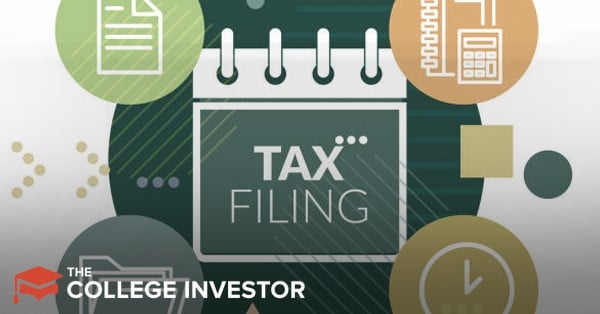Married Filing Separately To Lower Payments For IBR and RAP


Couples should calculate both tax and loan impacts before deciding, as outcomes vary significantly based on income levels, deductions, and repayment plan.
For married borrowers with federal student loan debt, filing taxes as “married filing separately” (MFS) can be an effective way to reduce their monthly payments under income-driven repayment (IDR) plans like Income-Based Repayment (IBR) or the new Repayment Assistance Plan (RAP).
These plans calculate payments based on a borrower’s adjusted gross income (AGI). If a couple files taxes jointly, both spouses’ incomes are used, potentially increasing the calculated payment. Filing separately limits the calculation to the borrower’s income only.
But that’s not the full picture. Tax law changes, including new deductions introduced by the One Big Beautiful Bill Act (OBBBA), complicate the decision. Deductions for tip and overtime income don’t apply to MFS filers. There may be other marriage penalty rules that impact you as well.
That means some borrowers will end up paying more in taxes (sometimes much more) without enough loan payment savings to make up for it.
Here are some sample tax and loan scenarios that highlight the trade-offs. In some cases, the loan payment reduction clearly outweighs the higher taxes. In others, the savings vanish once the tax hit is added in. There is no one-size-fits-all here, and the numbers could even vary year to year depending on your tax situation.
These examples are just used to highlight the situation.
In the first scenario, the borrower has a $30,000 income and $100,000 in federal student loans. Their spouse earns $150,000 with no student debt. They have one child and are using the IBR plan.
|
Married Filing Separately Versus Jointly |
|||
|---|---|---|---|
|
Student Loan Interest Deduction |
|||
|
Tax Credits (Child Tax Credit) |
|||
As you can see in the above example, this couple saves $4,540 per year in taxes by filing jointly.
However, Person A also has that $100,000 in Direct Loans. If this couple files a joint tax return, they must use their combined AGI.
If we assume this couple is looking for the lowest payment option for their loans, the best option is the IBR. The IBR payment if they files taxes MFJ would be $1,156 per month. However, the monthly payment drops to $0 per month if they file taxes MFS.
|
Student Loan Savings By Filing Separately |
||
|---|---|---|
|
Total Annual Student Loan Payments |
||
This example is very clear: taxes rise by $4,540 per year, but their student loan savings is $13,872 per year. A total savings of $9,332 per year.
In this scenario, both spouses have student loans, but one has significantly higher loans. They have one child.
Borrower A makes $50,000 per year, but has $150,000 in student loans they’re repaying under IBR. Borrower B makes $70,000 per year, but only has $30,000 in student loans and is repaying under the standard plan.
|
Married Filing Separately Versus Jointly |
|||
|---|---|---|---|
|
Student Loan Interest Deduction |
|||
|
Tax Credits (Child Tax Credit) |
|||
As you can see in the above example, this couple saves $877 per year in taxes by filing jointly.
The both have student loans, so let’s look at their loan payments. Person A has the bigger loan at $150,000. They are currently repaying under IBR. If they file MFS, their payment is $161 per month. If they file MFJ, their payment rises to $656 per month.
Person B has a much smaller loan at just $30,000. The Standard Plan payment is the best, at $345 per month in both scenarios.
Let’s add it up, and you can see that filing separately reduces their student loan payment in half:
|
Student Loan Savings By Filing Separately |
||
|---|---|---|
|
Total Annual Student Loan Payments |
||
This example is also very clear: taxes rise by $877 per year, but their student loan savings is $5,940 per year. A total savings of $5,063 per year.
Let’s look at a scenario where it’s not beneficial to file MFS, especially in light of the “No Tax On Overtime” rule in the OBBBA. It’s important to note that you cannot deduct the overtime pay if you file MFS.
Person A has $80,000 in student loans on IBR. This year they earned $80,000 base salary, but had $15,000 in overtime pay. Total pay is $95,000.
Person B makes $50,000 per year and has no student loans. The family has no children.
|
Married Filing Separately Versus Jointly |
|||
|---|---|---|---|
|
Student Loan Interest Deduction |
|||
|
Tax Credits (Child Tax Credit) |
|||
As you can see in the above example, this couple saves $4,721 per year filing jointly.
Person A’s student loan payment under IBR is $603 when MFS, and $923 MFJ. That works out to a student loan payment savings of only $3,840 per year
This makes filing taxes separately actually costlier by $881 per year.
|
Student Loan Savings By Filing Separately |
||
|---|---|---|
|
Total Annual Student Loan Payments |
||
In this example, even though filing separately provides a significantly lower student loan payment ($300 per month), the increased tax liability is not worth it.
The key is doing the math. If your overall savings (adding up both changes to your taxes and your student loans) is better MFS or MFJ, that’s the best option for you.
But it’s nuanced. These examples above are very basic. Every family will have their own income streams and tax deductions, and tax credits. You need to do the math and compare the options.
This may seem a bit overwhelming because there is a lot of math and scenarios to plan for. However, most tax software programs allow you to calculate the difference in taxes you’d pay under both married filing jointly and married filing separately. If you utilize an accountant to help with your taxes, they should also be able to provide you with the differences as well.
Then, you can look at your Federal loan repayment options on the Department of Education Loan Simulator.
Finally, you just add up the costs. You can use the chart above as a guide to see how your tax and student loan payments would add up, and see which way to file your taxes saves you the most money in total.
If you’re not quite sure where to start or what to do, consider hiring a financial advisor to help you with your student loans. We recommend The Student Loan Planner to help you put together a solid financial plan for your student loan debt. Check out The Student Loan Planner here.
You can also always call your lender, but they might not be able to help with this complex situation over the phone.
Depending on your tax situation and student loan amount, it could save you money to file your taxes married filing separately so that you can qualify for IBR or RAP and save on your student loans. However, you have to remember that you’ll pay more in taxes, so it’s important to do the math and see what scenario makes the most sense for you.
Don’t Miss These Other Stories:

Tax refunds in early 2026 could be $1,000 to $2,000 larger for many households due to retroactive tax law changes....

Why does it feel like large companies always get the upper hand? Maybe it’s the long contracts with fine print,...

What can you do if you can’t afford college? Maybe the financial aid award wasn’t enough, or you only want...